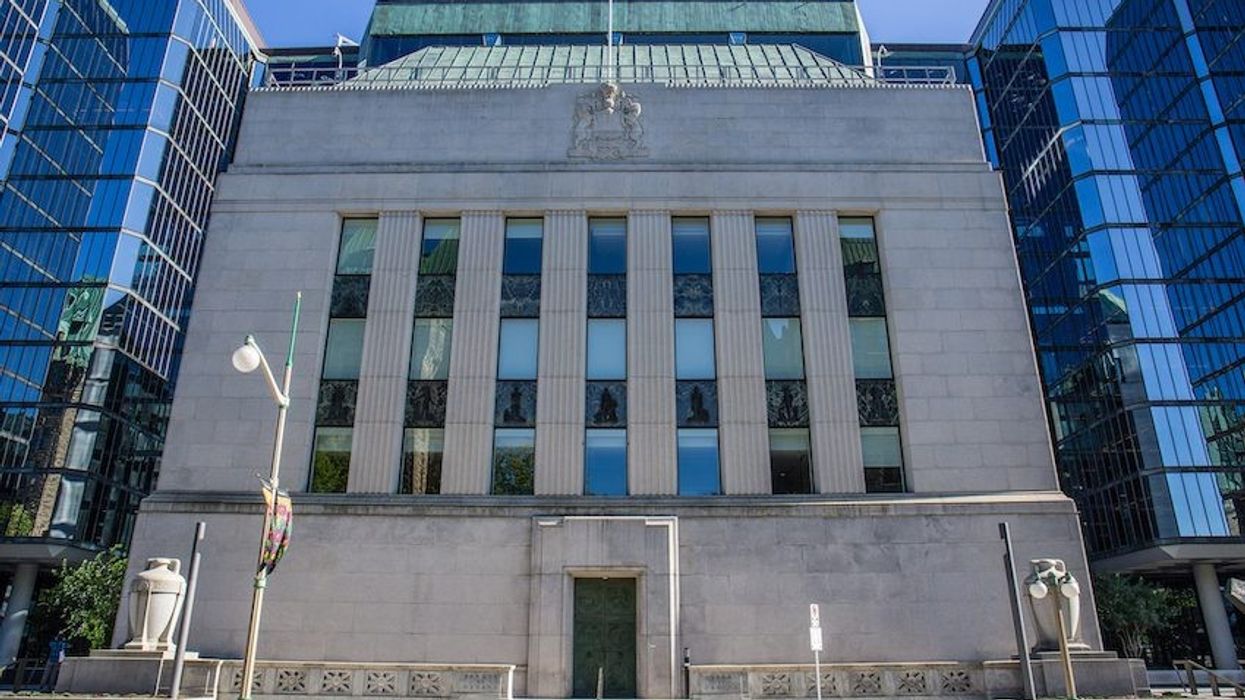The chances of avoiding an economic downturn before interest rates can return to normal are growing increasingly slim, requiring the Bank of Canada to risk a “kamikaze mission” and aim for a recession in order to reign in inflation.
That’s according to new analysis from Desjardins economists Royce Mendes and Tiago Figueiredo, who write in a recent note to investors that the BoC’s current neutral rate won’t make a dent in the soaring CPI.
“The published neutral rate range is unusable when inflation is running at almost 8% and the pandemic has created both severe and persistent distortions in the economy,” they write. “So monetary policymakers have to fly this plane without the aid of their typical instrument panel. The evolution of economic releases will determine the flight path from here.”
Instead, the central bank will need to rely instead on wage and inflation expectations when determining if more rate hikes are warranted -- and that the current data evidently isn’t sitting well.
“It seems like Governing Council might have had a sneak peek at the upcoming Canadian Survey of Consumer Expectations and not liked what they saw,” write the economists. “The Bank of Canada’s nightmare scenario is one in which high inflation expectations push employees to negotiate materially higher wages, a cost that is then recycled back into even higher consumer prices.”
READ: “Rate Hikes are Starting to Bite” As Canada Loses 40,000 Jobs in August
Now, they say, the BoC has little choice but to steer the economy into a recession; while such a “monetary policy-induced” downturn has been Desjardin’s base-case forecast since this summer, that stance has only strengthened given the BoC’s most recent data releases and hawkish language.
“While some shops are still debating whether or not a recession is on the horizon, we’re now wondering if it will only be a mild downturn,” write Mendes and Figueiredo.
Their take echoes other bank calls that a 4% terminal point is now the new normal from the BoC -- a rate that will be considered restrictive, and will more aggressively stem consumer borrowing and spending. That’s only been enforced by the latest US inflation reading of 8.3%; a slight decline from July’s 8.5%, but still clocking higher than economist expectations of 8.1%. That further fuels the chances of a larger rate hike from the U.S. Federal Reserve this month, which will in turn prompt stiffer rate hikes from its Canadian counterpart.
READ: Higher Interest Rates are Here to Stay: U.S. Fed Head
“Hotter US inflation that drives aggressive Fed tightening and weakens [the CAD] is likely to motivate the Bank of Canada to have greater confidence to shoot past four per cent with its policy rate,” wrote BMO Head of Capital Markets Economics Derek Holt in a client note.
Meanwhile, TD Securities Chief Canadian Strategist Andrew Kelvin upped his official call to 4% this week, writing to clients that, “The BoC's hawkish ambiguity implies a wider range of potential terminal rates for Canada.
“We see anything from 3.5%to 4.75% as plausible, and think a 4% terminal rate strikes a nice balance of maintaining BoC credibility and not unduly burdening the household sector.”
The next Bank of Canada announcement is slated for October 26. The central bank has increased its trend-setting Overnight Lending Rate five times since March -- the quickest hiking pace since the mid-90s -- from 0.25% to 3.25%, in efforts to cool the pace of inflation growth, which came in at 7.6% in July.





















